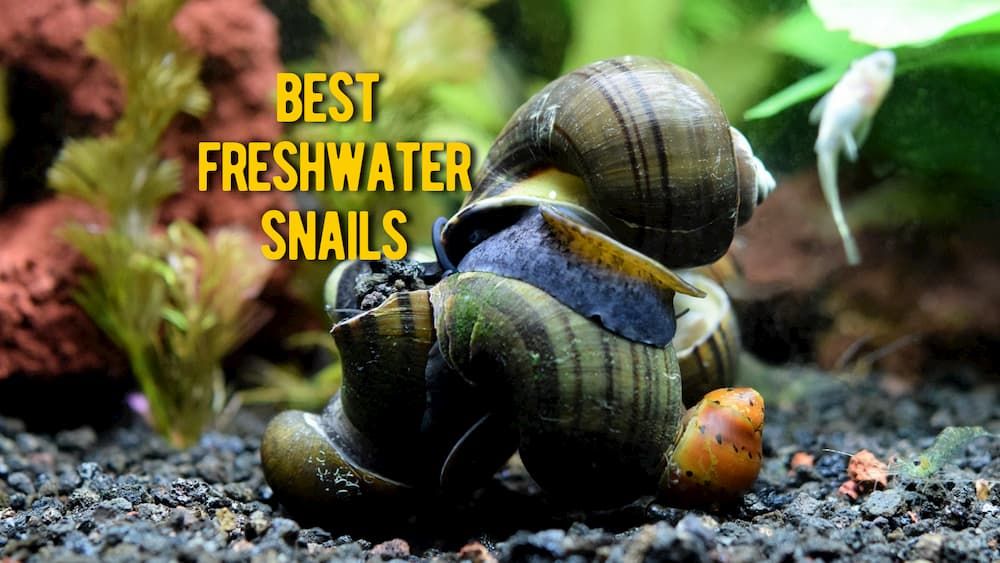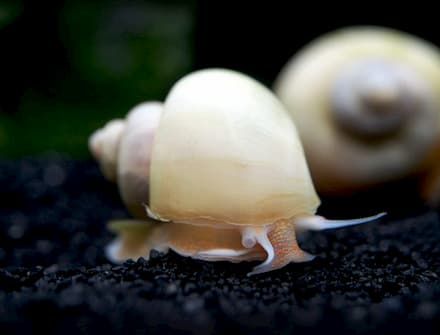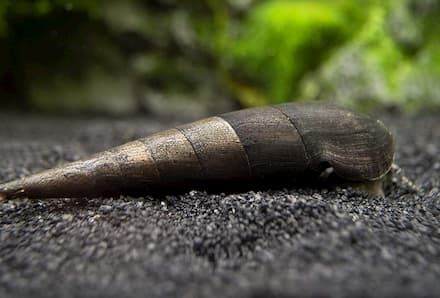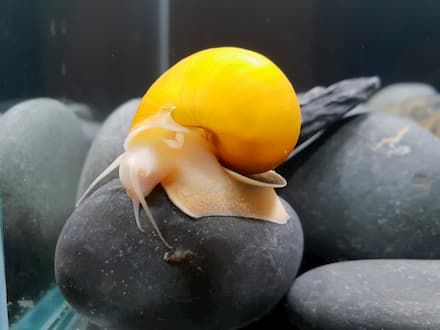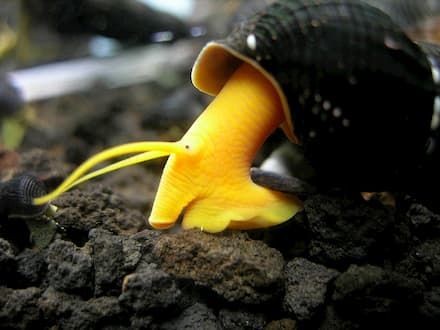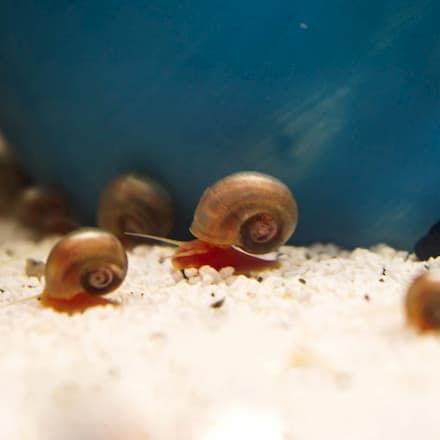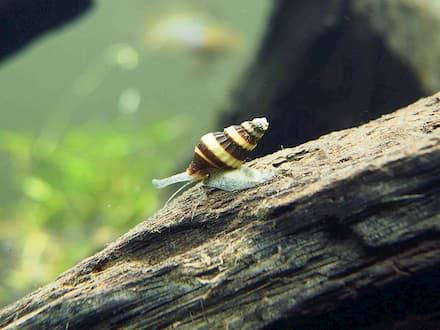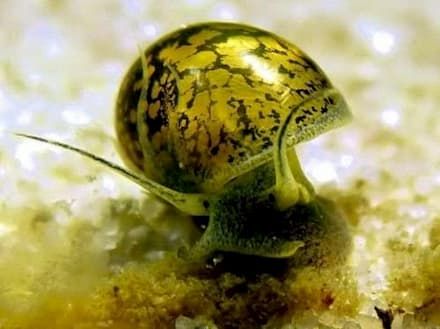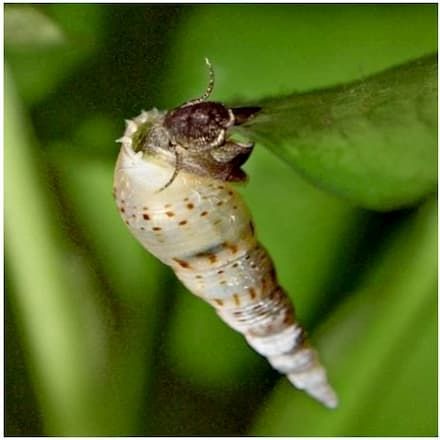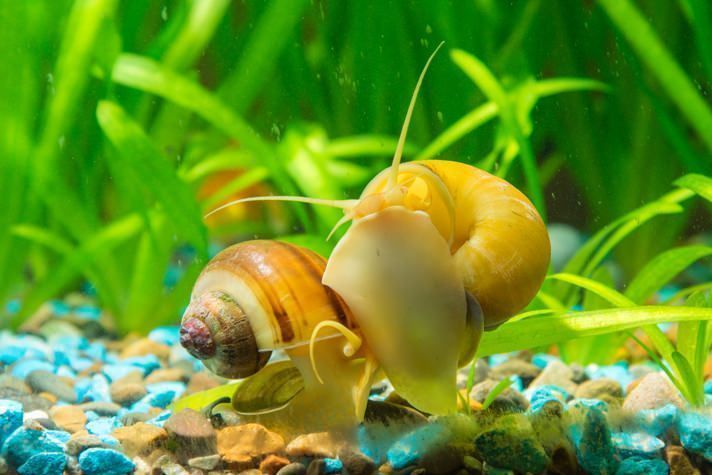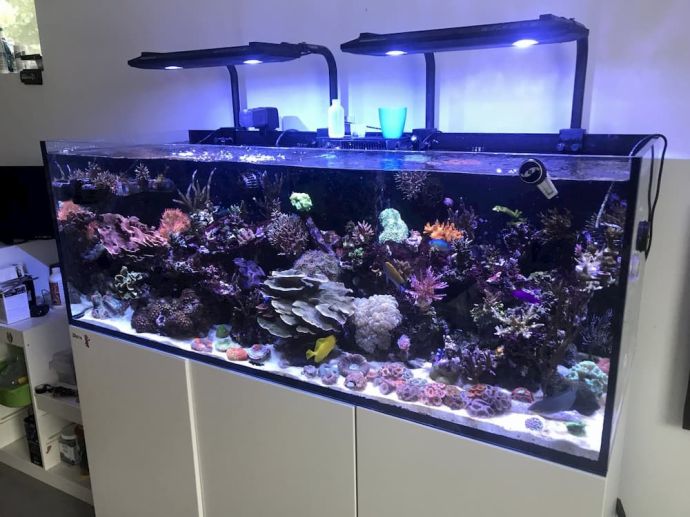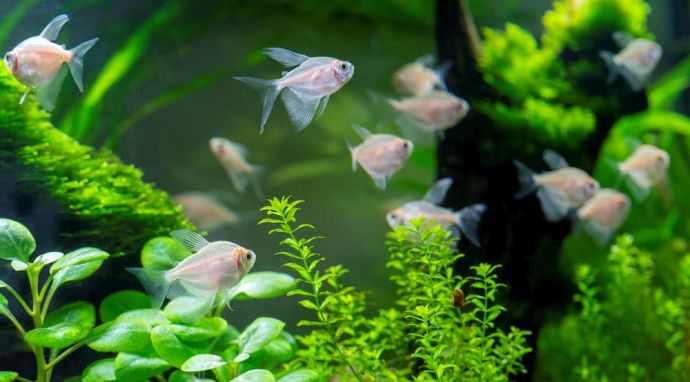The Best Aquarium Snails: Freshwater Aquarium Snails Review
Written by:
Author: Alina Andreeva
Alina A. is a professional writer, editor, and pet-lover. She has published over 50 articles on how to care for pets properly. Alina has been writing articles for 3 years, so she has considerable experience in this niche. Her natural curiosity helps her to expand her knowledge and learn new pet care life hacks, which will make your life much easier.
View all 79 articlesLearn about our editorial process and veterinary review board.
Viewed: 367
Updated on: 02/14/2023
With so many species of snails that can live in a freshwater fish tank, it can be stressful to make the right choice. So you need to get armed with just a little knowledge if you don’t want to regret it in the future.
Therefore, we have prepared some helpful information and a list of the best freshwater snails to guide you through the options and help you choose the best critters for your aquarium.
Freshwater snails are one of the most underestimated creatures in the aquatic scene.
Here’s why:
Snails bring a splash of beauty, add vibrant color to your aquarium, and help keep it clean.
From dusk to dawn, these little guys collect trash that accumulates over time. This brings ease and simplicity to the cleaning process and reduces wear on a filtration system. They are also straightforward to take care of. Freshwater snails do not require special care and keep aloof from other tank inhabitants.
Our TOP-3 Picks of Aquarium Snails
This list will help you get to know about the popular options we recommend. By the time you finish reading this, you will be ready to purchase some for your aquarium!
Products | Benefits | Links |
Our #1 Pick | 1. Nerite Snails Nerite snails are good-natured and get on well with other aquatic creatures. Quite energetic, they spend a lot of time traveling around the fish tank hunting for pieces of delicious seaweed and fish waste. You can control Nerite populations since they do not reproduce asexually. Also, they will not procreate offsprings until you put them into saltwater. So don’t worry, they will not invade your aquarium. | |
Our #2 Pick | 2. Mystery Snails Many people value in these snails is that it’s quite easy to keep down their population. They usually produce young only once a year. This makes it easy to control and regulate the number of snails in the aquarium. They are not only useful from an aesthetic point of view but also help clean the aquarium. This is a win-win solution for you. | |
Our #3 Pick | 3. Black Devil Snails These aquatic creatures look fancy. They are almost completely black, which instantly distinguishes them in any aquarium. One of the nice features of these creatures is that they will not cause problems with overpopulation. |
The Best Snails for Freshwater Aquarium (Full Reviews)
Now that we have found that pet snails are good and will keep your fish tank clean.
Below is a list of 11 freshwater snails to consider when looking for vibrant additions to your aquarium.
1. Nerite Snails
They are good-natured and get on well with other aquatic creatures. They may be restrained, but these snails are far from boring. Quite energetic, they spend a lot of time traveling around the fish tank, hunting for pieces of delicious seaweed and fish waste.
They are good-natured and get on well with other aquatic creatures. They may be restrained, but these snails are far from boring. Quite energetic, they spend a lot of time traveling around the fish tank, hunting for pieces of delicious seaweed and fish waste.
You can control Nerite populations since they do not reproduce asexually. Also, they will procreate offspring once you put them into salt water. So don’t worry, and they will not invade your aquarium.
Plus, it’s pretty easy to take care of Nerite Snails, as they are low-maintenance creatures. Be careful when placing them in the aquarium for the first time, and not putting them upside down. They find it difficult to right themselves when they are not on their backs. You can slightly push an overturned snail upright using a fishnet or your hand.
These little guys can make their way to the top of your aquarium and even spend some time above the water level, and it’s their normal behavior. Just make sure your cover is safe enough so that they cannot escape.
Pet shops and breeders classify Nerite type into different groups, usually based on their unique patterns.
- Zebra Nerite: These aquatic creatures boast the striped pattern on their bodies. Usually, the markings are black and yellow.
- Tiger Nerite: These little guys also feature striped shells. Tiger bodies, however, have uneven stripes, while the previous variety displays neat ones. They are usually black and orange.
- Black Racer Nerite: They are distinguished by their black bodies, which gives them a classy look.
- Horned Nerites: These pets have yellow shells accentuated by black swirls. The most distinctive feature is the signature horns that protrude from its shell.
Care Information
- Care level: easy
- Temperature: 72 – 78 degrees Fahrenheit (25.56 °C)
- Aquarium size: 10 gallons (37.85 l)
- Diet: seaweed, biodegradable plant material, fish waste, the leftover food off your fish, supplements with blanched vegetables
Features:
- Average Adult Size — 1/2 to 1 inches (2.54 cm)
- Shipping Weight — 11 ounces (0.33 l)
- Number of Units per Pack — 10
2. Mystery Snails
Another snail you can purchase for your freshwater aquarium is the Mystery Snail. Their bodies vary significantly in color: most shades of brown, gray, and black. Some Mystery Snails may be patterned, and most have vibrant orange accents around their bodies.
Another thing that many people value in these snails is that it’s pretty easy to keep down their population. This is because they usually produce young only once a year, making it easy to control and regulate the number of snails in the aquarium.
- Golden Mystery: These little guys blend beautifully with vibrant corals and fish. They are very friendly in this regard, so don’t worry about their safety. In addition to this, they are the most giant freshwater snails. They only need undereaten fish food, fish waste, or decaying plant material. Golden Mystery snails are an excellent choice if you are ready to dive into the responsibility of keeping a freshwater tank. They are easy to maintain, and, what is more, they reduce the time spent cleaning the aquarium.
- Blue Mystery: If you need a snail that fits into any fish tank but still copes with cleaning, then Blue Mystery Snail is a great option. This typeis somewhat similar to the Golden Mystery type but features a different color. These aquatic creatures help keep your substrate clean by chowing down residues on it. Be sure to keep the water level a little low for them. They climb up the side of the fish tank for air several times a day. If the water line is too high, it is more difficult for them to get enough air.
- Ivory White Mystery: This type is an excellent blend of ivory and white with an added soft shine. If you want a finely crafted fish tank, these snails will be a great choice. Although these guys become large, they peacefully coexist with small and medium-sized fish. Besides the leftover food off your fish, this snail also eats blanched vegetables: zucchini, cucumbers, etc. Placing this elegant creature in your aquarium is an excellent way to bring a splash of beauty to a fish home. They are not only beneficial from an aesthetic point of view but also help clean the aquarium. This is a win-win solution for you.
Care Information
- Care level: easy
- Temperature: 68 – 82 degrees Fahrenheit (27.78 °C)
- Aquarium size: 5 gallons (18.93 l)
- Diet: seaweed, biodegradable plant material, fish waste, the leftover food off your fish, supplements with blanched vegetables
Features:
- Average Adult Size — 2.5 – 3+ inches
- Shipping Weight — 11.2 ounces (0.33 l)
- Number of Units per Pack — 1, 3, 5, 10, 20, 30
3. Black Devil Snails
These aquatic creatures look fancy and almost entirely black, which instantly distinguishes them from any aquarium.
Black Devil Snails can grow quite large. Although it can become not as large as the Rabbit type, it still dwarfs many other freshwater species.
One of the excellent features of these creatures is that they will not cause problems with overpopulation. However, it will be complicated even if you want to breed them!
Due to their size, you expect them to be a little slow. But actually, it is not so at all. This is one of the fastest snails on our list! It may surprise you if you do not expect it. They can move from one end of the aquarium to the other in no time.
They are easy to care for and have a reasonable range of water parameters in which you can keep them.
Care Information
- Care level: easy
- Temperature: 71 – 82 degrees Fahrenheit (27.78 °C)
- Aquarium size: 10 gallons (37.85 l)
- Diet: seaweed, the leftover food off your fish, supplements with blanched vegetables, delicate plants
Features:
- Average Adult Size — 2 – 3 inches (7.62 cm)
- Shipping Weight — 11.2 ounces (0.33 l)
- Number of Units per Pack — 3, 5, 10, 20, 30
4. Gold Inca Snails
These snails are eye-catching and beautiful because of the rich yellow color that covers their body. Imagine them traveling around your well-planted aquarium. You get a great blend of yellow on top of green. It makes these aquatic creatures look genuinely outstanding!
They are easy to care for, and they have a reasonable range of water parameters in which you can keep them. These critters are also highly peaceful, making them beautiful for public aquariums.
You can easily keep them in small aquariums, which reach only about an inch in diameter. This gives you even more flexibility when choosing a fish tank for your home or office.
These snails do a great job cleaning aquarium algae. They move slowly around the tank, cleaning up everything they can! Fortunately, they will not munch on your plants like some other critters on this list.
They can live longer than many other types. This type often reaches the 5-year mark, and some even double it!
Care Information
- Care level: easy
- Temperature: 68 – 82 degrees Fahrenheit (27.78 °C)
- Aquarium size: 5 gallons (18.93 l)
- Diet: seaweed, the leftover food off your fish, fish waste
Features:
- Average Adult Size — 1.5 inches (3.81 cm)
- Shipping Weight — 11.2 ounces (0.33 l)
- Number of Units per Pack — 1
5. Japanese Trapdoor Snails
Out of all species of freshwater type, this may be the most underestimated. This type looks different and cannot be compared to any other species from our list. Their size can vary widely, with their length 0.5 – 2 inches (5.08 cm).
They can also live longer than many other snails. These types often reach the 5-year mark, and some even double it!
These critters are rather energetic at all times (even at night). This makes them an excellent choice for hobbyists who want viewer-friendly snails.
For some reason, many people believe that other species eat algae more eagerly. However, despite the small size, this type also copes with cleaning the aquarium.
Their slow nature makes them very thorough tank-cleaners.
Care Information
- Care level: easy
- Temperature: 64 – 84 degrees Fahrenheit (28.89 °C)
- Aquarium size: 15 gallons (56.78 l)
- Diet: seaweed, biodegradable plant material, fish waste, the leftover food off your fish, supplements with blanched vegetables
Features:
- Average Adult Size — 2 – 3 inches (7.62 cm)
- Shipping Weight — 11.2 ounces (0.33 l)
- Number of Units per Pack — 1, 3, 5, 10, 20, 30
6. Rabbit Snails
These critters look quite pretty, so they are a great addition to almost any freshwater fish tank. This species is distinguished by long shells, which give them a maximum size of about 3 – 5 inches (12.7 cm) in length.
These guys have a long head that protrudes slightly from their shells. It is interesting to observe how they stretch around their long shell. This makes them much slower than any other fish tank snail. Often, you can see them hiding in the sandy substrate.
Like the other species on our list, these critters are very interested in eating seaweed (and different types of greens). In addition, their slow nature makes them very thorough tank-cleaners.
If you are on the hunt for something unusual, this is a species that we highly recommend. These aquatic creatures boast a high level of activity. It’s fascinating to watch them moving around!
Care Information
- Care level: easy
- Temperature: 74 – 88 degrees Fahrenheit (31.11 °C)
- Aquarium size: 20 gallons (75.71 l)
- Diet: seaweed, biodegradable plant material, fish waste, the leftover food off your fish, supplements with blanched vegetables
Features:
- Average Adult Size — 1 – 2 inches (5.08 cm)
- Shipping Weight — 11 ounces (0.33 l)
- Number of Units per Pack — 6
7. Ramshorn Snails
Ramshorn Snails get their name because of their unique horn-like shell. This look helps them to stand out among other types and makes it easy to distinguish them at first sight.
With proper care, they will live for about a year. These are pretty standard numbers for freshwater snails.
These aquatic creatures boast a high level of activity. You will often see how they move along your aquarium walls or climb on any plants that they can find. It’s fascinating to watch them moving around!
However, it is known that this species of breeds rather quickly and can switch from a pet to a pest. Therefore, you may need to periodically remove some of them to prevent overcrowding of your fish tank.
Assassin types are carnivorous, so their favorite food is other snails. This makes them an excellent option if you want to get rid of pest snails in your aquarium.
Care Information
- Care level: easy
- Temperature: 70 – 82 degrees Fahrenheit (27.78 °C)
- Aquarium size: 5 gallons (18.93 l)
- Diet: seaweed, biodegradable plant material, fish waste, the leftover food off your fish, supplements with blanched vegetables
Features:
- Average Adult Size — 0.5 – 1 inches (2.54 cm)
- Shipping Weight — 10 ounces (0.3 l)
- Number of Units per Pack — 6
8. Assassin Snails
They are carnivorous, so their favorite food is other snails. This makes them an excellent option if you want to get rid of pest snails in your aquarium. However, they can eat many other snails from our list, so be careful when choosing this type!
This species has a beautiful shell with brown and yellow stripes all over it. Thus, they can add vibrant color to any aquarium.
This type usually has a length of one to two inches and is more energetic at night. However, you will not see much activity during the day, so if you want to see them traveling around, it is better to watch it late in the evening.
They can peacefully coexist with a bunch of other critters and hold aloof.
Care Information
- Care level: intermediate
- Temperature: 70 – 80 degrees Fahrenheit (26.67 °C)
- Aquarium size: 10 gallons (37.85 l)
- Diet: snails
Features:
- Average Adult Size — 2 inches (5.08 cm)
- Shipping Weight — 11.2 ounces (0.33 l)
- Number of Units per Pack — 1, 3, 10, 20, 30
9. Ivory Snail
Many aquarists love these creatures because of their elegant look. They have a creamy white color that covers their shell and body. This is another species of a freshwater type that does not require much care and is easy to take care of. They can peacefully coexist with a bunch of other critters and hold aloof.
Ivory is more active at night, so if you want to watch them moving around your aquarium, you will have to wait until the late evening. However, when they move, these snails have a fantastic amount of energy!
There are many water parameters in which these creatures can live, making them easy to care for. So, Ivory is one of the most newbie-friendly critters on this list!
These critters are extremely popular and can be found almost everywhere.
Care Information
- Care level: easy
- Temperature: 68 – 82 degrees Fahrenheit (27.78 °C)
- Aquarium size: 10 gallons (37.85 l)
- Diet: seaweed, biodegradable plant material, fish waste, the leftover food off your fish, supplements with blanched vegetables
Features:
- Average Adult Size — 2.5 – 3+ inches
- Shipping Weight — 11.2 ounces (033 l)
- Number of Units per Pack — 1, 3, 5, 10, 20, 30
10. Pond Snails
These critters are extremely popular and can be found almost everywhere. They are usually grayish-brown in color with a sharpened spiral shell.
However, they can quickly produce young and overcrowd your aquarium if left unchecked. If you want to maintain control over their population, you’d better keep an eye on the eggs. When Pond lay eggs, you can quickly remove them, but if you take a hands-off approach, they will overcrowd your fish tank.
This type is easy to maintain. You will never have to worry whether they will thrive in your aquarium if everything is relatively stable.
Care Information
- Care level: intermediate
- Temperature: 70 – 82 degrees Fahrenheit (27.78 °C)
- Aquarium size: 10 gallons (37.85 l)
- Diet: seaweed, biodegradable plant material, fish waste, the leftover food off your fish, supplements with blanched vegetables
Features:
- Average Adult Size — 6 inches (15.24 cm)
- Shipping Weight — 22 ounces (0.65 l)
- Number of Units per Pack — 1
11. Trumpet Snails
This is a type that some aquarium hobbyists love and other hate. It is due to their ability to quickly produce young and crowd a fish tank if you do not control it.
This type is easy to maintain. You will never have to worry whether they will thrive in your aquarium if everything is relatively stable. They will hold aloof and not mess with other tank inhabitants.
They are not large, making them look more “natural” than some other choices on this list. However, you should be careful with the power of your filtration system. Some filters can suck them in. If you cannot control it, we recommend installing some kind of guard in front so that they do not get stuck.
Care Information
- Care level: intermediate
- Temperature: 70 – 86 degrees Fahrenheit (30 °C)
- Aquarium size: 10 gallons (37.85 l)
- Diet: seaweed, biodegradable plant material, fish waste, the leftover food off your fish, supplements with blanched vegetables
Features:
- Average Adult Size — 3/4 – 1/4 inches
- Shipping Weight — 11.2 ounces (0.33 l)
- Number of Units per Pack — 20
READ MORE: TOP-5 Aquarium Care Mistakes
FAQ
How to Care for Freshwater Snails?
- Provide two-three gallons of water for each freshwater type. The right filter gives the critter an oxygen-rich environment. If you want them to produce young, leave a six-inch gap under the lid of the fish tank so that the females could lay their eggs.
- There should be no openings or gaps in the hood of your aquarium. These aquatic creatures can escape if they find a hole large enough to fit out.
- Snails can live in water ranging from 65° to 82° F.
- Add fish to your aquarium that can coexist with snails peacefully, such as zebrafish, neon tetras, and guppies. Keep in mind that some fish can eat snails, such as dorid catfish, puffers, and goldfish.
- Feed these aquarium inhabitants with a blend of veggies and fish food in the late evening. Snails are more energetic at night. Reduce the amount of food you feed them if there is something left in the morning. Increase the amount of food if they eat your aquarium plants.
What do Freshwater Snails Eat?
Most snails that can live in freshwater aquariums are herbivorous. They eat seaweed, decaying plant material, supplements with blanched vegetables, plant-based fish food. Many freshwater snails like to eat live plants and are considered pests to aquarium vegetation. Very few of these critters are carnivores.
In your fish tank, your snails should be constantly given natural algae and plants. In a well-equipped aquarium, they will find food themselves.
Snails also enjoy eating garden veggies. You can feed them raw or cooked lettuce, cucumbers, zucchini, and kale. In addition to this, you may find that your snails eat up the leftover food off your fish or fish waste.
When it comes to predatory snails, they should receive live prey, like bloodworms, feeder snails, and brine shrimps.[1]
Feeding time varies, it depends on the type of food offered. Veggies ensure the best health solution for your snails. If you keep your aquarium in good condition and stock it with plant life, your freshwater snails will find food on their own and will not need additional nutrition. As for predatory snails, they should be fed a constant supply of live prey once or even twice a day.
Are Snails Good for Freshwater Aquariums?
Snails can play an important role in keeping freshwater fish tank while you select the right species. Most snails are tank-cleaners that feed on algae, decaying plant material, fish waste, and other detritus, which makes them a great option to help you make cleaning a breeze in your aquarium.[2]
How long do Freshwater Snails Live?
The life span of freshwater snails can be different. It depends on the species and the environment they live in. As a rule, they can live one to three years and are usually killed by predators. Some species can live more than ten years in captivity.
How do Freshwater Snails Reproduce?
They are often hermaphrodites. In other words, they carry sperm and eggs and can produce young without the help of another snail. However, some species, such as Nerite type, require both male and female for reproduction. Snails reach puberty at the age of about one year. A freshwater type usually lays eggs about fourteen days after fertilization.[3]
How big do Freshwater Snails get?
Freshwater snails can be a great addition to many fish tanks. Their size can vary widely, with their length 0.5 – 4 inches (10.16 cm). These critters are very peaceful and should not be placed with other aquatic creatures that might eat or bother them.
READ MORE: How to set up a freshwater aquarium?
Article Sources:
- Madsen, H., and F. Frandsen. The Spread of Freshwater Snails Including Those of Medical and Veterinary Importance. sciencedirect.com/science/article/abs/pii/0001706X89900302.
- “Freshwater snails.” Ward’s Science, https://www.wardsci.com/assetsvc/asset/en_US/id/16920373/contents
- “American Fisheries Society List of Freshwater Snails from Canada and the United States.” USGS, https://www.usgs.gov/centers/wetland-and-aquatic-research-center-warc/science/american-fisheries-society-list-freshwater?qt-science_center_objects=0#qt-science_center_objects
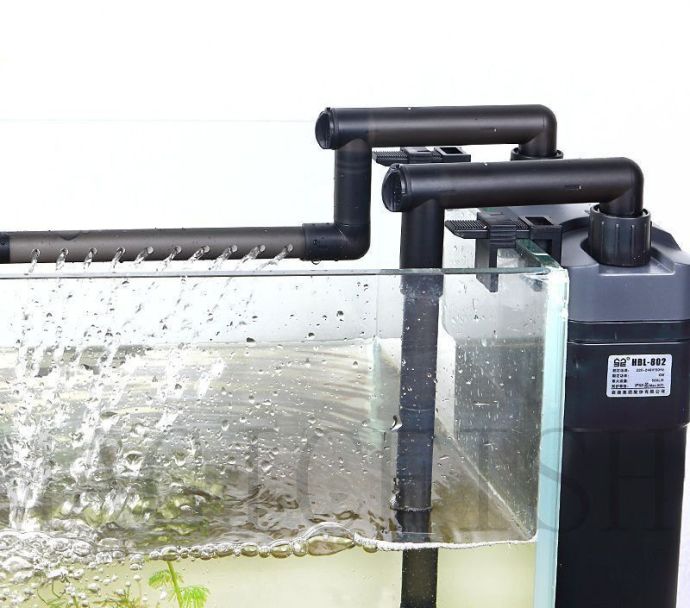 Fish and Aquarium Reviews The 9 Best Aquarium Canister Filters: Best Canister Filter Reviews (Updated List)
Fish and Aquarium Reviews The 9 Best Aquarium Canister Filters: Best Canister Filter Reviews (Updated List) - 1458
- 5
 Fish and Aquarium Reviews The Best UV Sterilizers for Freshwater and Saltwater Aquarium
Fish and Aquarium Reviews The Best UV Sterilizers for Freshwater and Saltwater Aquarium - 259
- 0
 Dog Products & Toys Reviews The 10 Best Brush for Australian Shepherd: Review and Buying Guide
Dog Products & Toys Reviews The 10 Best Brush for Australian Shepherd: Review and Buying Guide - 13077
- 0









